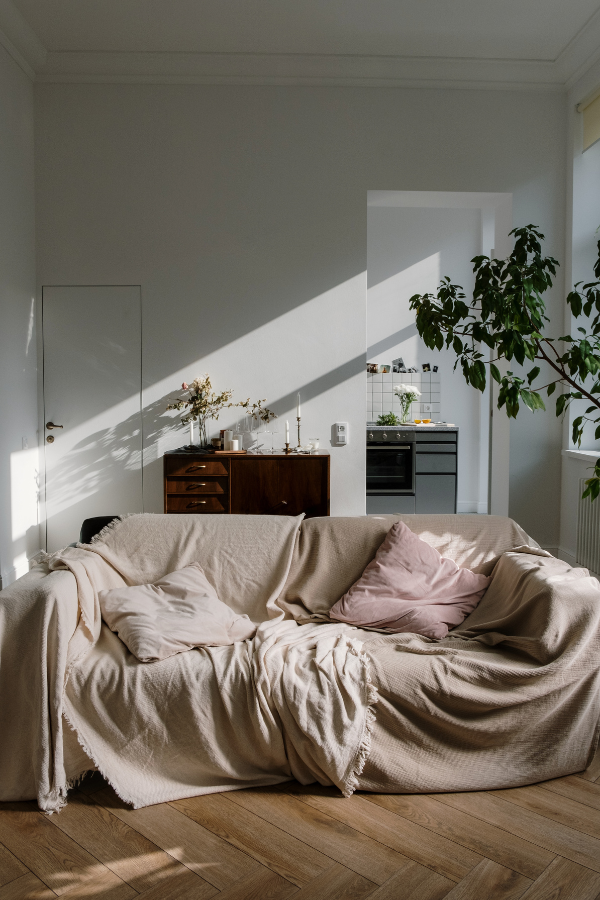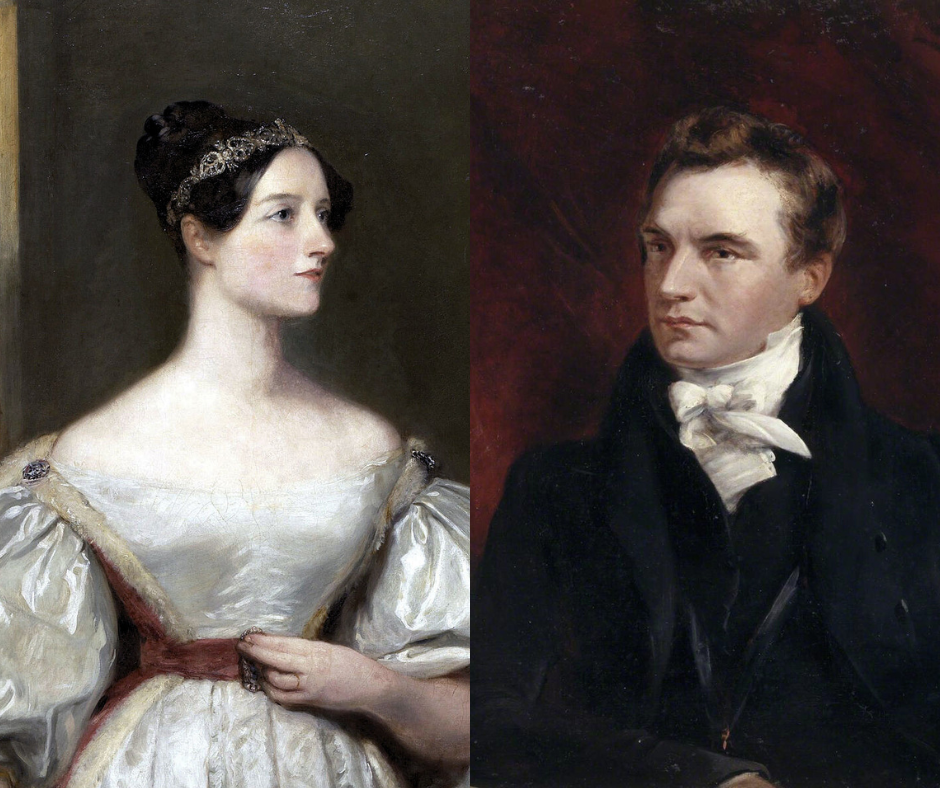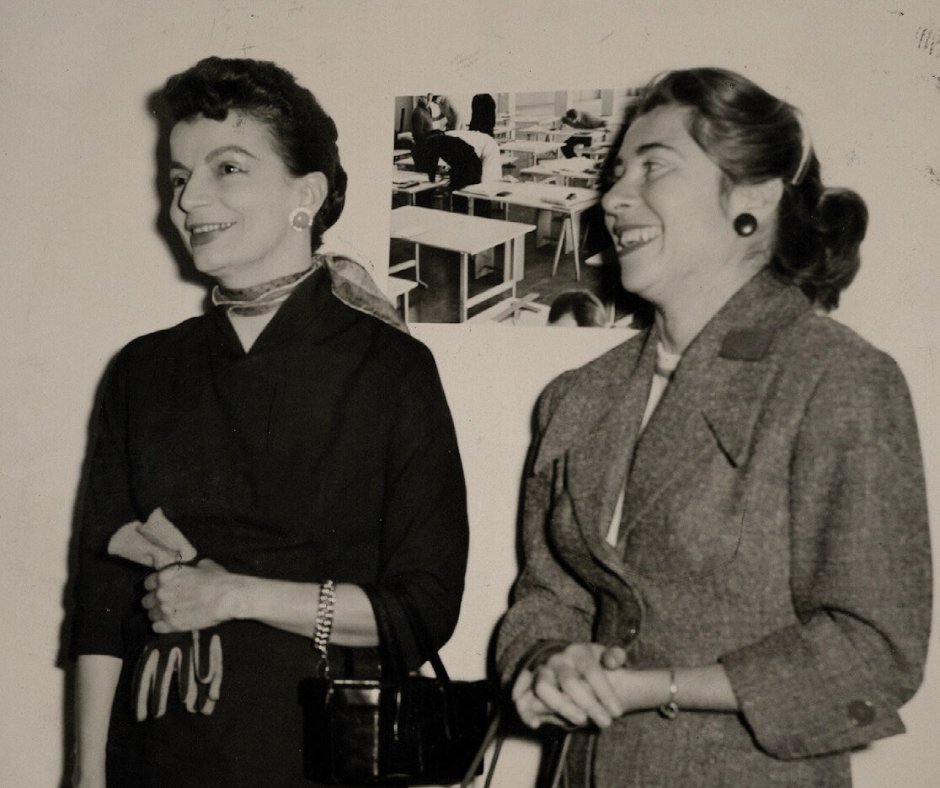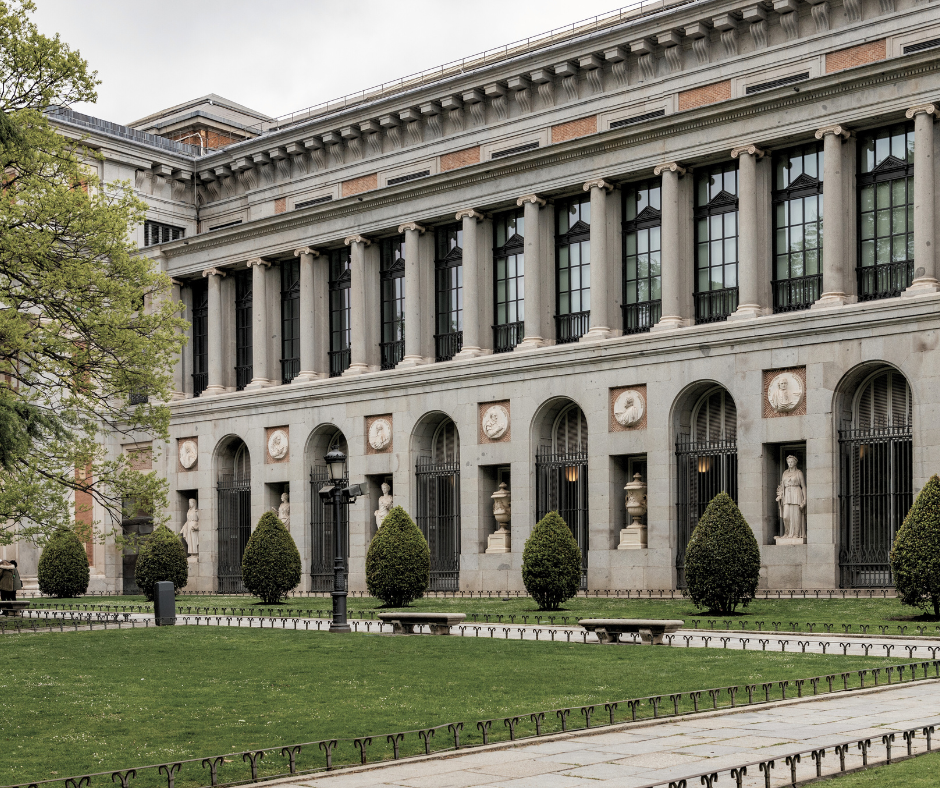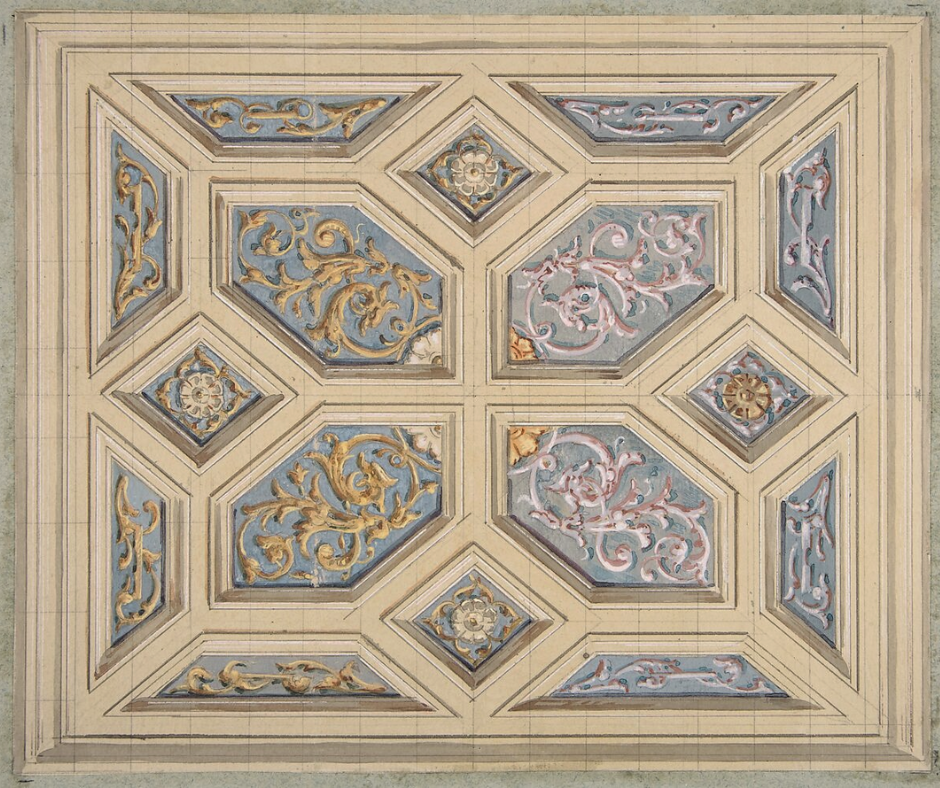
Tracing the History of Coffered Ceilings from Ancient Egypt to Today
Summary
Reflection Questions
Journal Prompt
The architectural elegance and allure of coffered ceilings have transcended millennia, evolving from the grand temples of ancient Egypt to the elegant homes of modern designers and even contemporary art museums. These distinctive ceilings—characterized by their recessed panels and intricate patterns—have not only graced some of history’s most iconic structures but have also provided practical benefits that continue to be valued today. From enhancing acoustics to adding structural integrity and aesthetic depth, coffered ceilings offer a unique blend of form and function. Let’s explore the rich history of coffered ceilings—tracing their origins, cultural significance, and technological advancements that have shaped their enduring appeal across different eras.
First, What is a Coffered Ceiling?
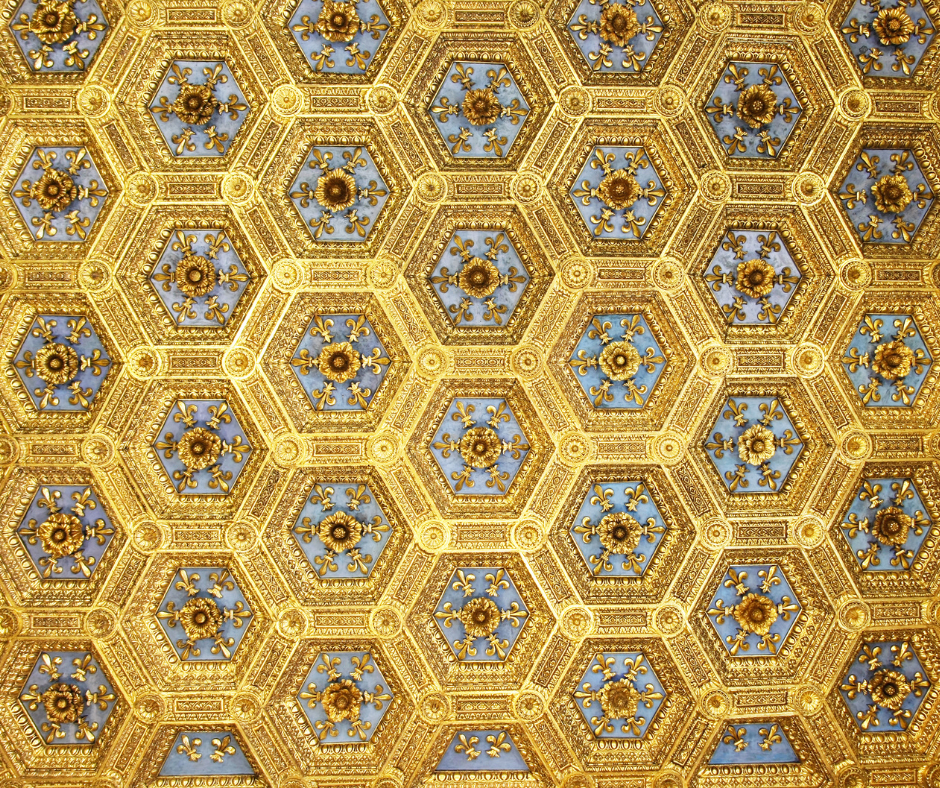
A coffered ceiling is a type of architectural feature characterized by a series of recessed panels. These sunken panels are typically cut in shapes like squares or rectangles. They are then joined to create a geometric pattern across the surface of the ceiling. These ceiling panels, known as coffers, can vary in depth and are typically bordered by rough-hewn beams or moldings that add depth and texture to the ceiling.
In a coffered ceiling, the beams that form the grid pattern are often attached to or anchored in the ceiling joists for stability and support. Wood glue is used in the assembly of the decorative elements of a coffered ceiling. The beams, moldings, or trim that form the sunken panels are often glued together to ensure a seamless and sturdy bond. Designers today sometimes integrate recessed lighting within the panels for a unique and wholly functional ceiling design.
Benefits of Incorporating a Coffered Ceiling

Adding a coffered ceiling to your home can make a huge difference. The architectural details of a coffered ceiling not only add visual interest and a sense of elegance to a room. Coffered ceilings create visual interest, but they also offer practical benefits. On the practical side, these benefits include reducing the overall weight of the ceiling and improving acoustics by minimizing echoes. Their ability to absorb sound (improved acoustics) was a key consideration in earlier implementations.
Traditionally made from materials like stone, wood, or plaster, coffered ceilings have evolved to incorporate modern materials and techniques, allowing for more intricate and varied designs. Historically used in grand public buildings, temples, and palaces to convey a sense of grandeur and sophistication, coffered ceilings are now also found in contemporary residential and commercial spaces. Their versatility and timeless appeal make them a popular choice for enhancing the architectural beauty and character of interiors.
Turning an Existing Ceiling into a Coffered Ceiling
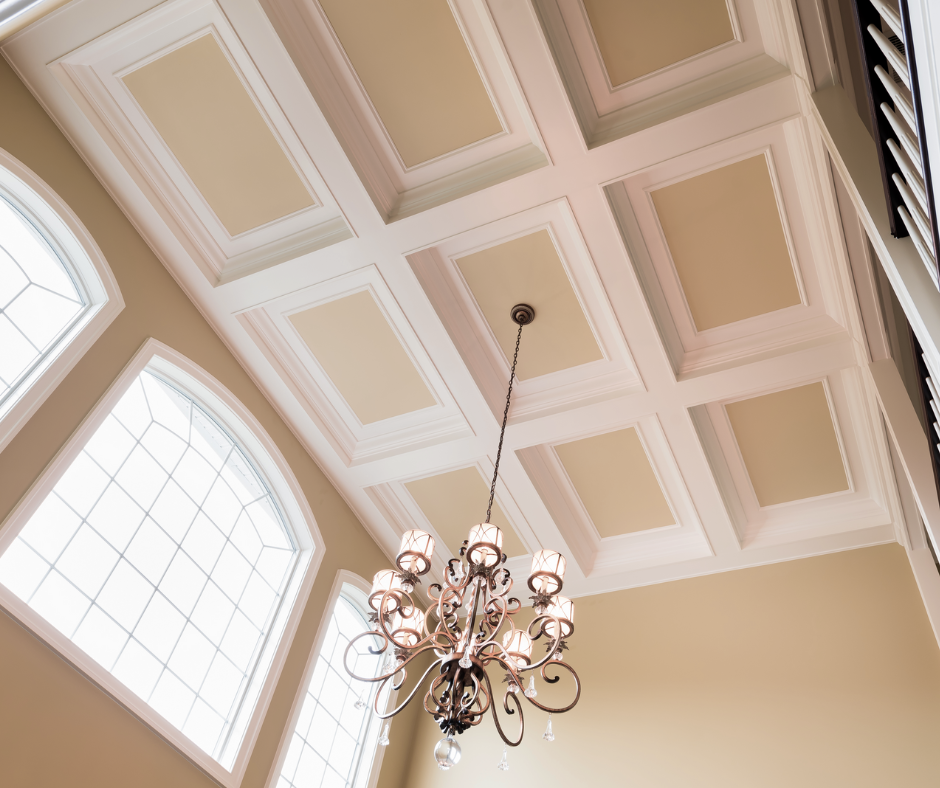
Existing ceilings can be retrofitted to incorporate a coffered design, and this does not defeat the point. Retrofitting a ceiling to be coffered can add architectural detail and character to a room without compromising the structural integrity or intended benefits of a coffered ceiling.
However, retrofitting may slightly reduce the height of the ceiling, so it’s important to ensure that the room has adequate ceiling height to accommodate the new design without feeling cramped. Lower ceilings might not be compatible.
Homeowners and designers must ensure that the additional weight of the coffered ceiling elements is adequately supported by the existing ceiling structure. Consulting with a structural engineer may be advisable for significant installations.
An Abridged History of Coffered Ceilings
Now that all of our readers can identify coffered ceilings, let’s explore their history. Coffered ceilings are a classic architectural element with a rich history that spans several millennia. The concept of coffered ceilings has its roots in ancient Egypt, where early examples of this grid-like pattern can be found in the tombs and temples constructed by the pharaohs.
These ceilings were primarily made from stone, reflecting the Egyptians’ advanced stone-working techniques and their preference for durable materials that could withstand the test of time. Coffered ceilings in this era served a dual purpose: they were both decorative and structural. The recessed panels reduced the weight of large stone slabs, making them easier to support.
The patterns and designs also held symbolic meanings connected to the Egyptians’ religious and cultural beliefs. These early coffered ceilings were not just functional elements of architecture but also integral parts of the aesthetic and spiritual experience of these grand structures.
Greek Influence
The Greeks further developed the concept of a coffered fifth wall, incorporating these ceilings extensively into their public buildings and temples. Unlike the Egyptians, the Greeks often used wood as their primary material, allowing for more intricate and varied designs. These wooden coffers, known as lacunaria, were meticulously crafted and often adorned with elaborate carvings and painted motifs.
The use of wood made it possible to achieve greater precision and complexity in the designs, enhancing the aesthetic appeal of interior spaces. Not only would a coffered ceiling draw the eye upward during this period, but it would also serve a practical purpose.
The Greeks recognized the acoustic benefits of coffered ceilings, which helped to reduce echo and improve sound quality in large halls and auditoriums. This architectural feature became a hallmark of Greek design, exemplified in structures like the Parthenon, where the coffered ceilings contributed to the overall harmony and beauty of the space.
Roman Adoption
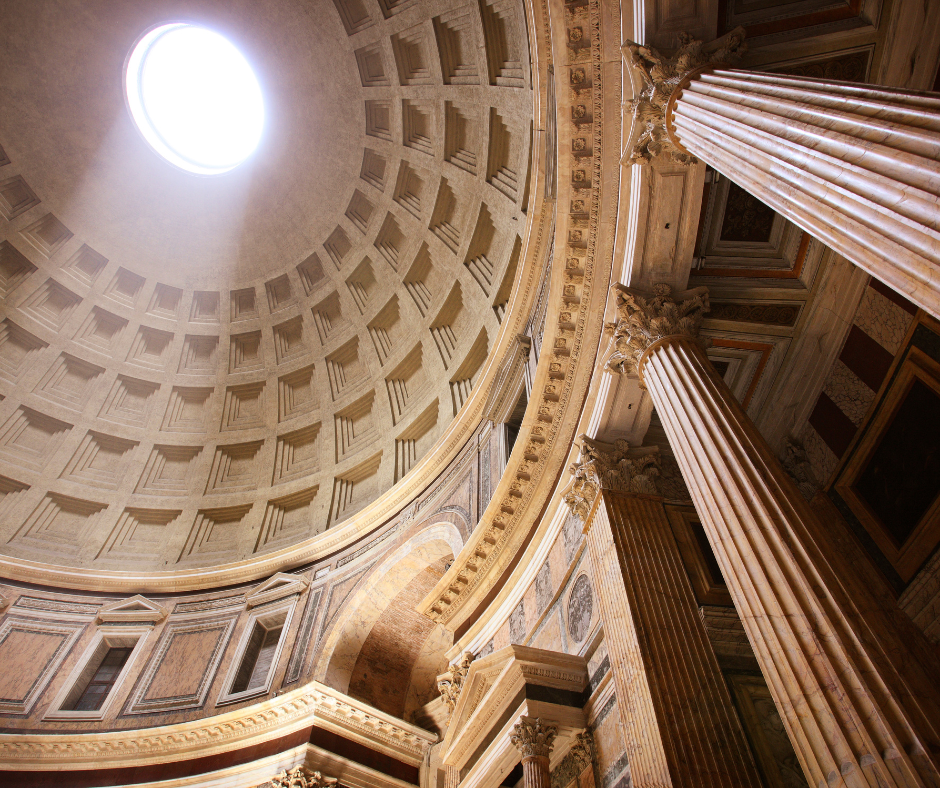
In Ancient Rome, the coffered ceiling was also adopted (and perfected). Roman architects employed advanced engineering techniques and materials, such as concrete and stone, to create coffered ceilings that were both grand and structurally innovative. One of the most iconic examples is the Pantheon in Rome, whose coffered dome remains a marvel of ancient engineering.
The coffers in the Pantheon’s dome not only reduce the weight of the massive structure but also add a dynamic visual rhythm to the interior space. Put simply, each coffered ceiling was a focal point of the public or living space. Roman coffered ceilings were often richly decorated with intricate moldings, stucco, and gilding, reflecting the empire’s wealth and artistic sophistication. These ceilings were used in a wide range of buildings, from public baths and basilicas to private villas, showcasing the versatility and enduring appeal of coffered designs in Roman architecture.
Medieval Period
During the Middle Ages, the architectural focus shifted significantly with the rise of Gothic architecture, characterized by pointed arches, ribbed vaults, and flying buttresses. This new style emphasized verticality and light, moving away from the more solid and horizontal emphasis seen in Roman and early Christian buildings.
Consequently, the use of coffered ceilings diminished during this period. Gothic architecture’s intricate stonework and towering structures did not lend themselves well to the horizontal, recessed patterns of coffered ceilings. However, the decorative potential of coffered ceilings was not entirely forgotten. In certain regions, particularly in Southern Europe, some buildings continued to feature coffered ceilings, albeit in a more subdued form.
Fuel your creative fire & be a part of a supportive community that values how you love to live.
subscribe to our newsletter
*please check your Spam folder for the latest DesignDash Magazine issue immediately after subscription

These instances were rare and often found in ecclesiastical or royal buildings where the traditional classical influence persisted. The use of wood and plaster for these ceilings provided a decorative element that complemented the overall Gothic aesthetic, even if they were not a predominant feature.
Renaissance Revival
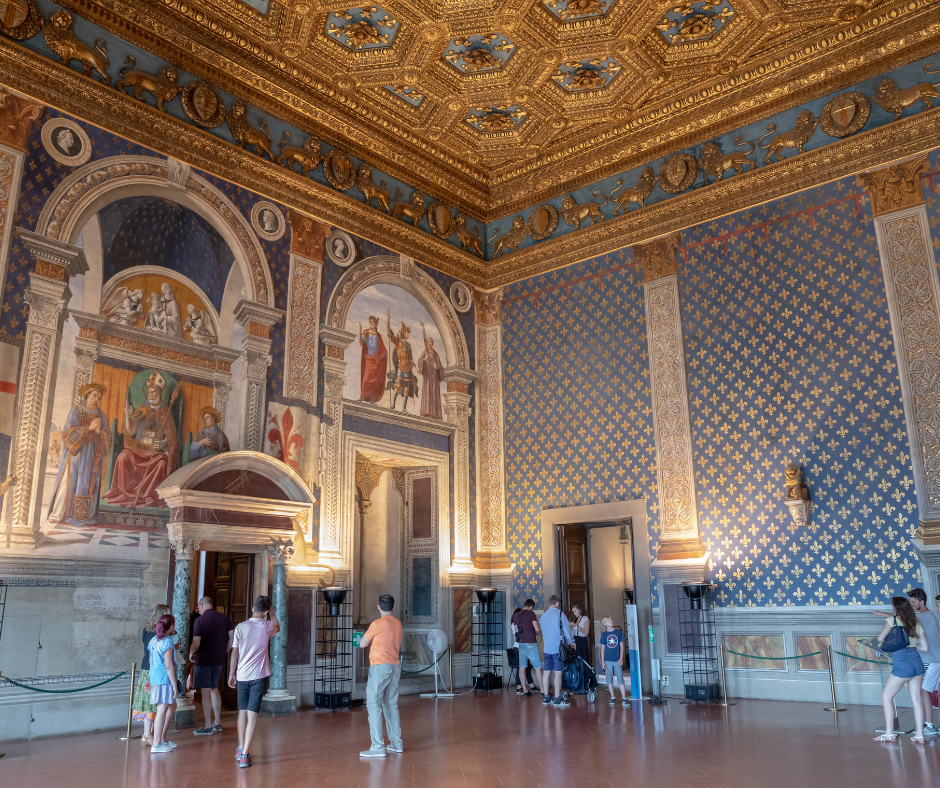
The Renaissance, beginning in the 14th century and flourishing in the 15th and 16th centuries, brought about a revival of classical antiquity’s architectural principles, including the use of coffered ceilings. This period was marked by a renewed interest in the symmetry, proportion, and geometric clarity that defined ancient Greek and Roman architecture.
Renaissance architects like Andrea Palladio were instrumental in reintroducing coffered ceilings as a key design element. Palladio, known for his works in Italy, particularly in Venice and the Veneto region, incorporated coffered ceilings into his villas and public buildings, emphasizing their structural and aesthetic benefits. These ceilings were meticulously designed with geometric patterns that reflected the Renaissance ideals of harmony and order.
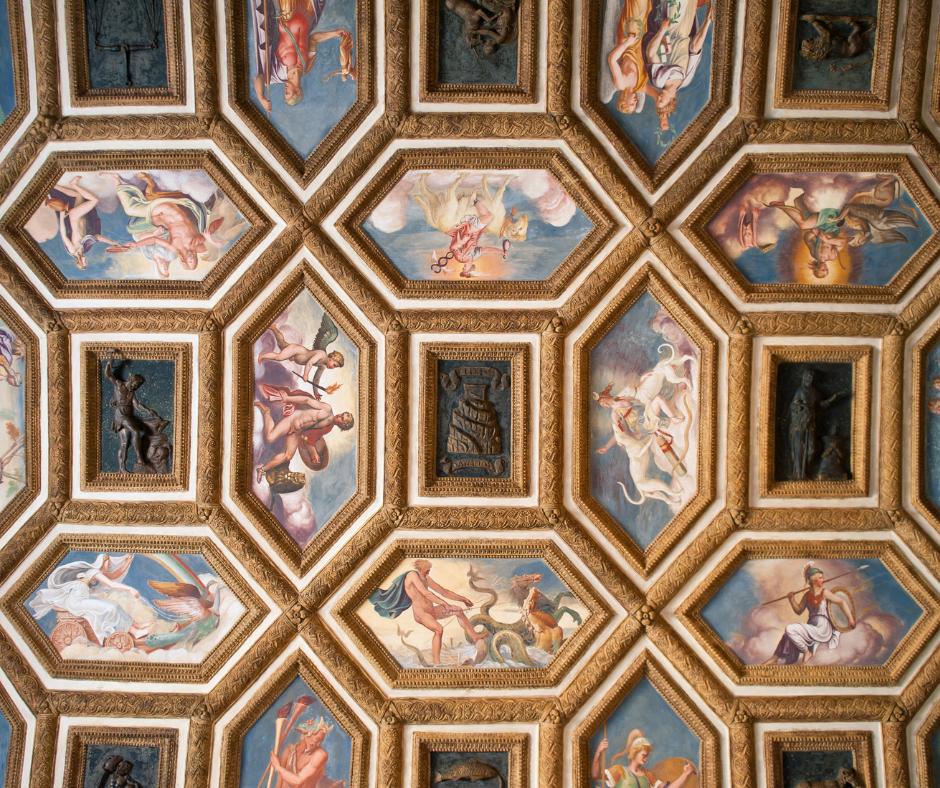
Often constructed from wood or stucco, they were richly decorated with moldings, paintings, and gilding, creating an opulent effect. The revival of coffered ceilings during the Renaissance not only paid homage to classical antiquity but also demonstrated the period’s innovative spirit, blending historical reverence with contemporary artistic expression. This resurgence set the stage for the continued use and adaptation of coffered ceilings in subsequent architectural styles.
Baroque and Rococo
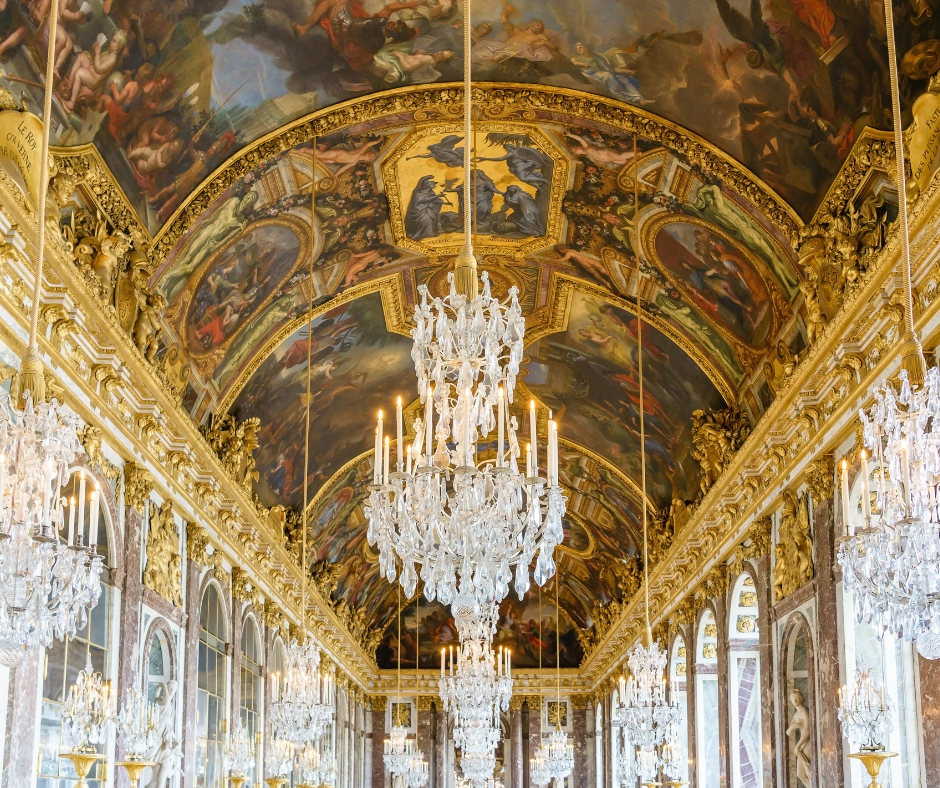
During the Baroque and Rococo periods, spanning the 17th and 18th centuries, coffered ceilings reached new heights of elaboration and artistic expression. The Baroque era, known for its dramatic use of light, color, and form, saw coffered ceilings adorned with intricate carvings, gilding, and frescoes.
These designs were often highly detailed, featuring floral motifs, mythological scenes, and ornate patterns that conveyed a sense of grandeur and opulence. Coffered ceilings during this time were not just architectural elements but canvases for artistic expression, exemplified in the ceilings of palaces, grand churches, and public buildings.
The Rococo period, which followed and evolved from the Baroque, took this ornamentation in architecture and interior design to an even more elaborate level, with lighter, more playful designs. Rococo coffered ceilings were characterized by their use of pastel colors, asymmetrical patterns, and intricate stucco work, creating a sense of lightness and elegance. Both styles used coffered ceilings to enhance the overall aesthetic impact of the interiors, making them central features in conveying the wealth and sophistication of the era.
19th and 20th Centuries
The 19th and 20th centuries significantly changed architecture and building technology, driven by the Industrial Revolution. Advances in materials such as steel and concrete allowed for greater flexibility in design and construction, and coffered ceilings benefited from these innovations.
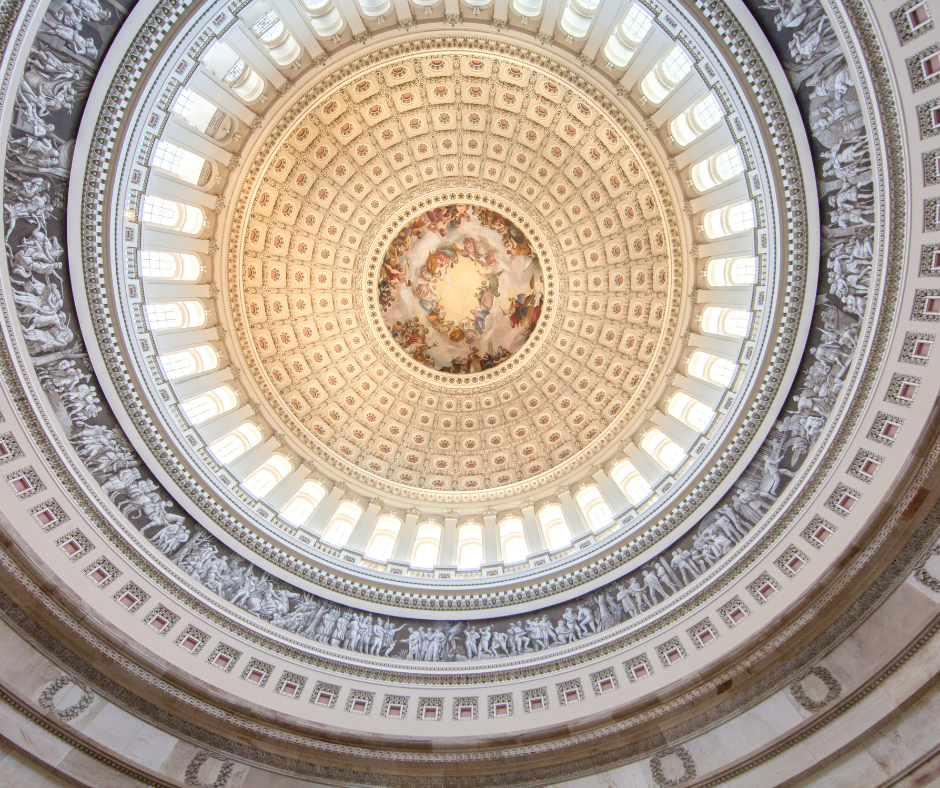
While the use of coffered ceilings in residential buildings declined as architectural tastes shifted towards simpler, more functional designs, they remained popular in public and institutional architecture. Buildings such as libraries, courthouses, and government offices often featured coffered ceilings, which conveyed a sense of dignity and permanence.
The use of plaster and prefabricated elements made it easier and more cost-effective to create detailed coffered designs, while innovations in lighting allowed for dramatic effects that highlighted the depth and intricacy of the ceilings. The influence of historical styles, including Renaissance and Baroque, could still be seen in these coffered ceilings, blending traditional aesthetics with modern construction techniques.
Contemporary Take on Coffered Ceilings
In contemporary architecture, coffered ceilings have experienced a revival, becoming a popular choice in both residential and commercial spaces. Modern interpretations of coffered ceilings often blend traditional aesthetics with contemporary materials and techniques, resulting in designs that are both timeless and innovative. In private homes, you might find a coffered ceiling in the dining room or great room.
Today’s coffered ceilings might incorporate materials such as lightweight composites, reclaimed wood, or metal, allowing for greater versatility and creativity in design. Advances in technology have also made it possible to create more intricate and customized patterns using CNC machining and 3D printing. In residential settings, coffered ceilings add a sense of elegance and sophistication, enhancing the architectural character of living rooms, dining areas, and entryways.
In commercial spaces, they are used to create striking visual impacts, often integrated with modern lighting systems to highlight the geometric patterns and add depth to the space. This renewed interest in coffered ceilings reflects a broader trend in contemporary design: a desire to blend the beauty of classical elements with the functionality and innovation of modern architecture.
Final Thoughts
Understanding the origins and evolution of architectural and interior elements not only enriches the design process but also deepens our appreciation for the craftsmanship and cultural significance they embody. Whether you are renovating a historic property or creating a modern masterpiece, exploring the rich tapestry of architectural history can guide you in making informed and inspired design choices. Embrace the legacy of coffered ceilings and other interior elements to create spaces that are both beautiful and meaningful, blending the best of the past with the innovations of today.



